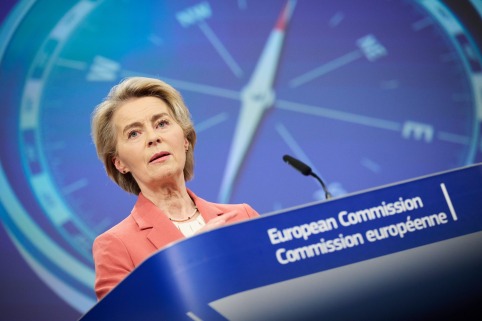First Assessment of the Competitiveness Compass
FORWIT’s Europe working group supports the ambitious research and innovation policy agendas set out in the EC’s Competitiveness Compass. In view of the unprecedented speed with which the new US administration is changing the international economic and geopolitical order and how Europe is increasingly being forced into an uncomfortable position between the two power blocs of the USA and China, everything possible must be done to strengthen Europe’s competitiveness and technological sovereignty.
This basic approval should not hide the document’s weaknesses. The large number of planned legal acts and initiatives, which according to the Competitiveness Compass are to be launched in a short space of time, give the impression that old top-down ways of thinking in the form of administrative regulations are to be replaced by new top-down ways of thinking in the form of administrative ‘strategies’. Such a unidirectional approach threatens to fail in the reality of European policy-making. In general, when implementing STI measures, care should be taken to provide scope for bottom-up activities of a scientific-technical and entrepreneurial nature. Only then will it be possible to react adequately to unforeseen developments and maintain the entrepreneurial spirit.
Unclear priorities and the threat of losing proven research instruments
Proven instruments, such as those offered by the Research Framework Programme (FP), should not be thrown overboard lightly. There is therefore an urgent need to clarify the position and role of the FP. The lack of explicit mention of the FP in the Competitiveness Compass gives rise to fears that the Competitiveness Fund will become a shell for financing a large number of programmes, the implementation and strategic development of which will then be spread across several Directorates-General. The working group urgently warns against sacrificing the FP to such seemingly greater efficiency. Instead, consideration should be given to how the FP could be better positioned explicitly within the Competitiveness Fund and provided with a guaranteed funding commitment.
Preserving the autonomy of the ERC and increasing efficiency
The working group also shares the concerns already expressed by various parties about the planned greater integration between the European Research Council (ERC) and the European Innovation Council (EIC). Co-operation between the two institutions is already in full swing. The widely recognised success story of the ERC is essentially based on the strategic autonomy guaranteed to the ERC by the European Commission in the form of the Scientific Council. It would be important to extend this autonomy to the operational level of the ERC and the implementation of the work programmes instead of restricting it through forced adaptation and standardisation.
Finally, the working group emphasises that there are a number of constructive proposals for a more efficient design of the so-called 2nd pillar of the FP, which deal with a stronger and deeper integration of European industrial research – such as the Heitor Report or, most recently, the report ‘Towards an Ambitious FP10’ by CEPS – which need to be taken up and consolidated. Although a ‘polar star’ provides the direction for orientation, it requires a secure and well-marked route in order to reach the destination.
Note
The ‘Europe’ working group is chaired by Helga Nowotny and includes Council members Dietrich Haubenberger, Georg Kopetz, Johanna Pirker, Monika Ritsch-Marte and Tom Henzinger. Their assessment has been edited for length and clarity.


